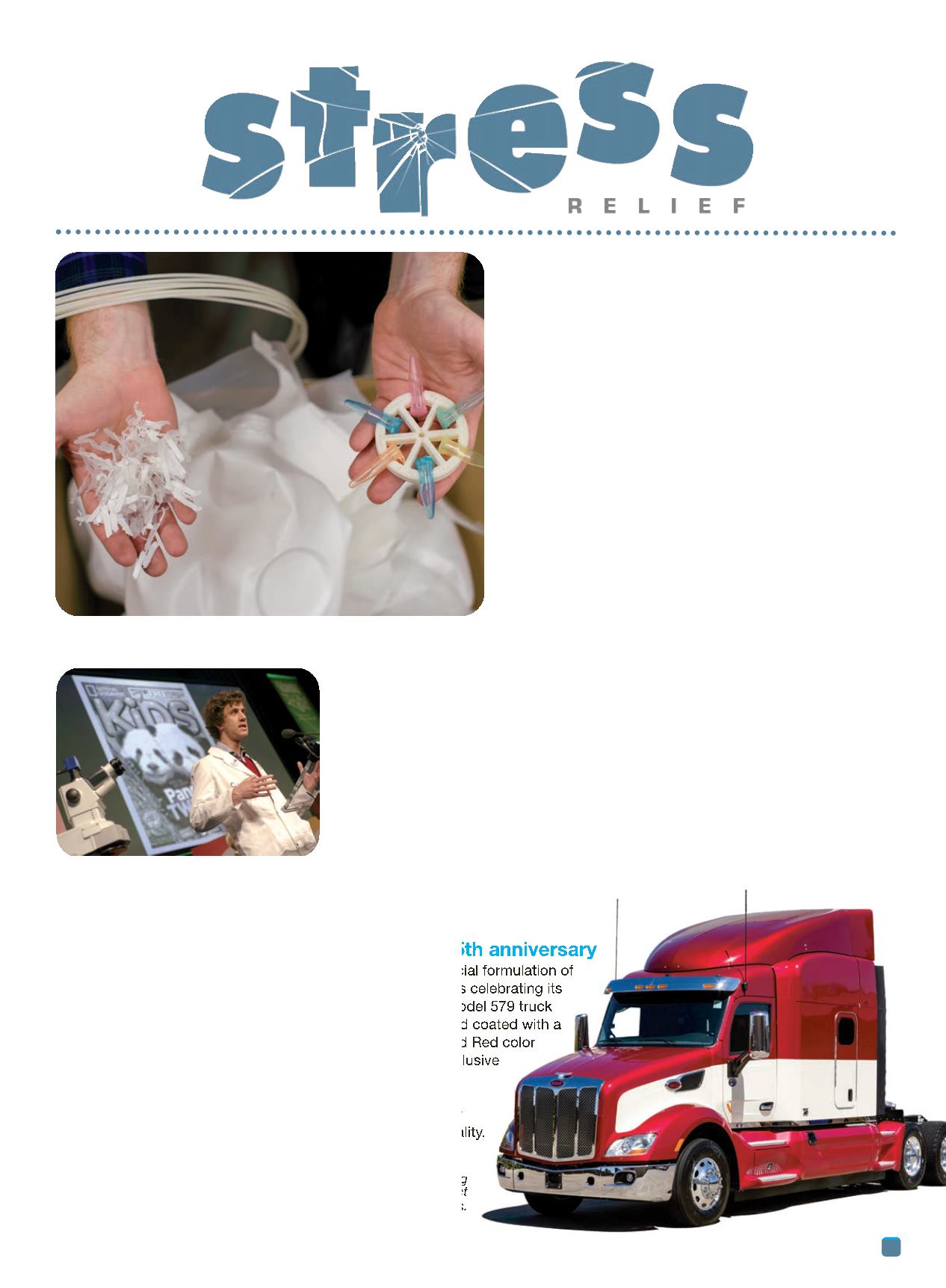

Exclusive color developed for company’s 75th anniversary
Axalta Coating Systems, Glen Mills, Pa., developed a special formulation of
Diamond Red exclusively for Peterbilt, Denton, Tex. Peterbilt is celebrating its
75th anniversary this year by unveiling a limited production Model 579 truck
featuring state-of-the-art aerodynamics, distinctive styling, and coated with a
two-tone paint design that is a modern version of the Diamond Red color
on its original 1939 model. The Imron Elite paint line is the exclusive
topcoat used at Peterbilt manufacturing facilities in the U.S.,
Canada, and Mexico. An identical product is used in the
commercial vehicle aftermarket by Peterbilt dealers and repair
centers to ensure customer satisfaction and repair-in-kind quality.
axaltacoatingsystems.com,
peterbilt.com.
Peterbilt’s exclusive new color, Diamond Red, is formulated to bring
out the lines and details of the truck, while showcasing new effect
pigments in the Imron Elite paint line from Axalta Coating Systems.
ADVANCED MATERIALS & PROCESSES •
JULY 2014
47
3D printing old milk jugs
A study led by Joshua Pearce of Michigan
Technological University (MTU), Houghton, shows that
making plastic 3D printer filament from milk jugs uses less
energy—often a lot less—than recycling them
conventionally. The team did a life cycle analysis on a
typical milk jug made from high-density polyethylene
(HDPE) plastic. After cleaning it and cutting it in pieces, it
was put through an office shredder and a RecycleBot,
which turns waste plastic into 3D printer filament.
Compared to an ideal urban recycling program, which
collects and processes plastic locally, turning milk jugs
into filament at home uses about 3% less energy.
“Where it really shows substantial savings is in smaller
towns, where you have to transport the plastic to be
collected, then again to be recycled, and a third time to be
made into products,” says Pearce, associate professor of
materials science and engineering. In this scenario, energy
savings skyrocket to 70-80%. And, recycling your own
milk jugs uses 90% less energy than making virgin plastic
from petroleum.
For more information: Joshua Pearce,
906.487.1466,
pearce@mtu.edu,
mtu.edu.
Old milk jugs can be recycled into filament for 3D printing, saving both
money and the environment. Courtesy of Sarah Bird/MTU.
National Geographic Kids
claimed its ninth
Guinness World Records title for the smallest
magazine cover, using patented technology
from IBM, Armonk, N.Y.
The world’s tiniest magazine cover
National Geographic Kids
claimed its ninth Guinness World Records title for the
smallest magazine cover, using patented technology from IBM, Armonk, N.Y., at the
USA Science & Engineering Festival in Washington. To create the record-setting
cover, IBM scientists invented a tiny “chisel” with a heatable silicon tip 100,000
times smaller than a sharpened pencil point. Using this nanosized tip, which
creates patterns and structures on a microscopic scale, it took scientists just 10
minutes and 40 seconds to etch the magazine cover onto a polymer. The resulting
magazine cover measures 11 × 14 µm.
National Geographic Kids
let its readers vote online for their favorite design and
they chose the March 2014 cover, which earned the honor of a microscopic
version, visible through a ZEISS Axio Imager 2 microscope
.
research.ibm.com,
guinnessworldrecords.com,
kids.nationalgeographic.com.


















